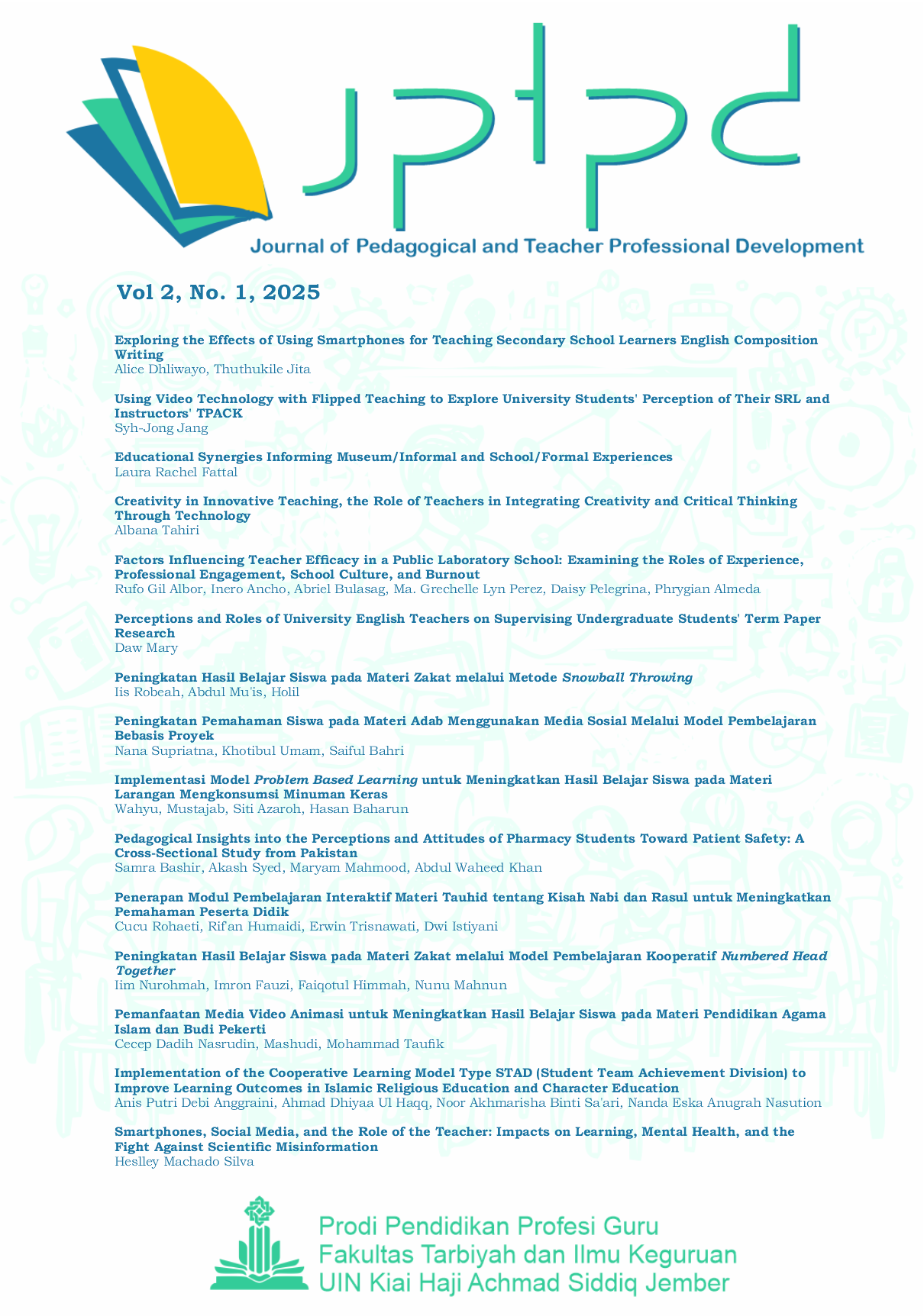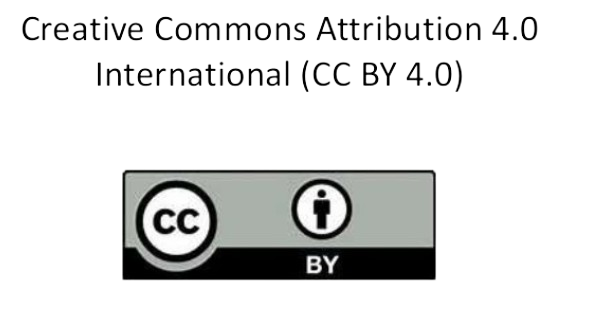Educational Synergies Informing Museum/Informal and School/Formal Experiences
DOI:
https://doi.org/10.35719/jptpd.v2i1.960Keywords:
Critical and Imaginative Pedagogy, Educational Synergies, Formal Education, Informal Learning, Museum Education, Transdisciplinary CurriculumAbstract
This article advocates for the educational importance of the synergy between museum/informal and school/formal pedagogical praxis and perspectives. Realigning learning from a curricular/aesthetic focus on art historical constructs to generate cognition through pedagogies of discovery, risk-taking, imaginative, and critical thinking has energized teaching in both museums and schools. The significance of this research article stems from its timely focus on the valuable but often unacknowledged synergetic educational practices in both museums and schools. The discussion includes: a) Museum pedagogical practices, b) Interactive exemplar museum/school educational praxis, c) Transdisciplinary curricula, d) Navigating online resources, e) Expanding creative technologies, and f) Inquiry and discovery as life-long educational goals. From cabinets of curiosities, to palaces of wonder, museums are no longer solely repositories for objects but spaces of aesthetic-lived experiences for students to create dialogue and make connections with their everyday world.
References
Beard, C. and Wilson, J.P. (2018). Experiential learning: A practical guide for training, coaching and education. 4th edition. London, GB: Kogan Page Ltd.
Bell, D. R. and Smith, J. K. (2020). Inside the digital learning laboratory: New directions in museum education. Curator: The Museum Journal, 63 (3), 371-386. https://doi.org/10.1111/cura.12376
Boix-Mansilla, V. (2016). Interdisciplinary learning: A cognitive-epistemological foundation. In: Frodeman, R. Kelin, J., (eds) Oxford handbook of interdisciplinarity. 2nd ed. Oxford University Press, Oxford, 1-16
Carr, D. (2003). The promise of cultural institutions. Lanham, MD: Alta Mira Press.
Carter, D. (2018). Narrative learning a theory and method in arts and museum education. Studies in Art Education. 59 (22), 126-144. https://doi.org/10.1080/00393541.2018.1442548
Chang, E. (2006). Interactive experiences and contextual learning in museums. Studies in Art Education. 47 (2), 170-186. https://www.jstor.org/stable/3497107
Choi. S. (2015). Relational aesthetics in art museum education: Engendering visitors’ narratives through participatory acts for interpretation. Studies in Art Education, 55 (1), 51-63. https://doi.org/10.1080/00393541.2013.11518916
Dewey, J. (1934). Art as experience. New York, New York. G. P. Putnam & Sons.
DiCindio, C. (2020). Driven by curiosity: Creating opportunities for exploration on guided tours in art museums. Art Education, 73 (2), 43-48. https://doi.org/10.1080/00043125.2019.1695482
Dik, A.D., Morrison, R., Sabol, F.R., and Tuttle, L. (2021). Looking beyond Covid-19: arts education policy implications and opportunities. Arts Education Policy Review, https://doi.org/10.1080/10632913.2021.1931603
Duke, L. (2010). The museum visit: It’s an experience, not a lesson.” Curator: The Museum Journal, 53 (3), 271-279. https://doi.org/10.1111/j.2151-6952.2010.00028.x
Ebitz, D. (2005). Qualifications and the professional preparation and ddevelopment of art museum educators. Studies in Art Education. 46 (2), 43-48. https://doi.org/10.1080/00393541.2005.11651787
Erler, C. (2013). Art of local radiance: The teacher’s guide to the Toledo Museum of Art glass pavilion. Studies in Art Education. 54 (2), 171-186. https://doi.org/10.1080/00393541.2013.11518891
Gregorious, M. (2019). Creative thinking features and museum interactivity: Examining the narrative and possibility thinking features in primary classrooms using learning resources associated with museum visits. Thinking Skills and Creativity, 32, 51-65. http://doi.org/10.1016/j.tsc.2019.03.003
Harris, N. (2013) Capital culture: J. Carter Brown, The National Gallery of Art and the reinvention of the museum experience. Chicago, Ill: University of Chicago Press.
Hillier. L. (2018, July 5). How museums are using immersive digital experiences. https://econsultancy.ccom/how-museums-are-using-immersive-digital-experiences/
Hooper-Greenhill, E. (2007). Museums and education; Purpose, pedagogy and performances. London, GB: Routledge.
Kletchka, D. C. (2018). Toward post-critical museologies in U.S. art museums. Studies in Art Education, 52 (4), 310-322. https://DOI:10.1080/00393541.2018.1509264
Kai-Kee, E. Latina, L. and Sdoyan, L. (2020). Activity-based teaching in the art museum, movement, embodiment, emotion. Los Angeles, CA. J.P. Getty Museum.
Ku, K.Y.I, Lee, V.S.L. and Ellis, J.W. (2017). Using artwork as problem context in generic critical thinking instruction: A strategy for thoughts. Thinking Skills and Creativity, 25, 53-59. http://dx.doi.org/10.1016/j.tsc.2017.07.001
Lacoe, J., Painter, G.D. and Williams, D. (2020). Museums as classrooms: The academic and behavioral impacts of “Schools in the Park.” AERA Open https://doi.org/10.1177/2332858420940309
Museum of Modern Art www.moma.org
Nasir, N.S., Lee, C.D., Pea, R. and de Royston, M.M. (2021). Rethinking learning: What the interdisciplinary science tells us. Educational Researcher, 50 (8), 557-565. https://DOI:10.3102/0013189X211047251
National Arts Standards www.nationalartsstandards.org
Park, J. Y., & Son, J. B. (2010). Transitioning toward transdisciplinary learning in a multidisciplinary environment. International Journal of Pedagogies and Learning, 6(1), 82-93. https://doi.org/10.5172/ijpl.6.1.82
Pitts, P. (2018). Visitor to visitor learning: Setting up open-ended inquiry in an unstaffed space. Journal of Museum Education, 43 (4), 1-28. https://doi.org/10.1080/10598650.2018.1522127
Quinn, T. (2020). About museums, culture, and justice to explore in your classroom. New York, New York. Teachers College Press.
Smithsonian American Art Museum http://www.americanart.si.edu
The Getty Center www.getty.edu
United Nations Sustainability Goals https://www.un.org/sustainabledevelopment/education.
Vallance, E. (2004) Museum education as curriculum:Four models leading to a fifth. Studies in Art Education. 46 (4), 343-358. https://doi.org/10.1080/00393541.2004.11651780
Vatsky, S. (2018). Museum gallery activities: A handbook. Arlington, VA. American Association of Museums.
Yenamine, P. (2013). Visual thinking strategies, using art to deepen learning across school disciplines. Cambridge, MA: Harvard University Press.
Downloads
Published
How to Cite
Issue
Section
License
Copyright (c) 2025 Journal of Pedagogical and Teacher Professional Development

This work is licensed under a Creative Commons Attribution 4.0 International License.











